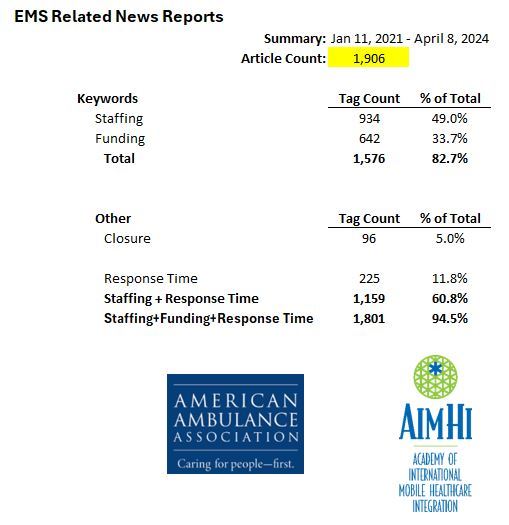Many EMS systems reported similar trends...
Special thanks to Jimmy Pierson of Medic Ambulance for sharing this story… The referenced study is available in the JAMA hyperlink in the article.
-----------------------------
COVID-19: 'Dramatic' Surge in Out-of-Hospital Cardiac Arrests in NYC
Megan Brooks
June 24, 2020
https://www.medscape.com/viewarticle/932913
The COVID-19 pandemic in New York City led to a surge in out-of-hospital cardiac arrests (OHCAs) that placed a huge burden on first responders, a new analysis demonstrates.
During the height of the pandemic in New York, there was a "dramatic increase in cardiopulmonary arrests, nearly all presented in non-shockable cardiac rhythms (>90% fatality rate) and vulnerable patient populations were most affected," David Prezant, MD, chief medical officer, Fire Department of New York (FDNY), told Medscape Medical News.
In a news release, Prezant noted that "relatively few, if any, patients were tested to confirm the presence of COVID-19," making it impossible to distinguish between cardiac arrests as a result of COVID-19 and those that may have resulted from other health conditions.
"We also can't rule out the possibility that some people may have died from delays in seeking or receiving treatment for non–COVID-19-related conditions. However, the dramatic increase in cardiac arrests compared to the same period in 2019 strongly indicates that the pandemic was directly or indirectly responsible for that surge in cardiac arrests and deaths," said Prezant.
The study was published online June 19 in JAMA Cardiology.
New York City has the largest and busiest EMS system in the US, serving a population of more than 8.4 million people and responding to more than 1.5 million calls every year.
To gauge the impact of COVID-19 on first responders, Prezant and colleagues analyzed data for adults with OHCA who received EMS resuscitation from March 1, when the first case of COVID-19 was diagnosed in NYC, through April 25, when EMS call volume had receded to pre-COVID-19 levels.
Compared with the same period in 2019, the COVID-19 period had an excess of 2653 patients with OHCA who underwent EMS resuscitation attempts (3989 in 2020 vs 1336 in 2019, P < .001), an incidence rate triple that of 2019 (47.5 vs 15.9 per 100,000).
On the worst day – Monday, April 6 – OHCAs peaked at 305 cases, an increase of nearly 10-fold compared with the same day in 2019.
Despite the surge in cases, the median response time of available EMS units to OHCAs increased by only about 1 minute over 2019, a non-significant difference. Although the average time varied, median response time during the COVID period was less than 3 minutes.
A More Vulnerable Group
Compared with 2019, patients suffering OHCA during the pandemic period were older (mean age 72 vs 68 years), less likely to be white (20% white vs 33%) and more likely to have hypertension (54% vs 46%), diabetes (36% vs 26%), physical limitations (57% vs 48%) and cardiac rhythms that don't respond to defibrillator shocks (92% vs 81%).
Compared with 2019, the COVID-19 period had substantial reductions in return of spontaneous circulation (ROSC) (18% vs 35%; P < .001) and sustained ROSC (11% vs 25%; P < .001). The case fatality rate was 90% in the COVID-19 period vs 75% a year earlier.

